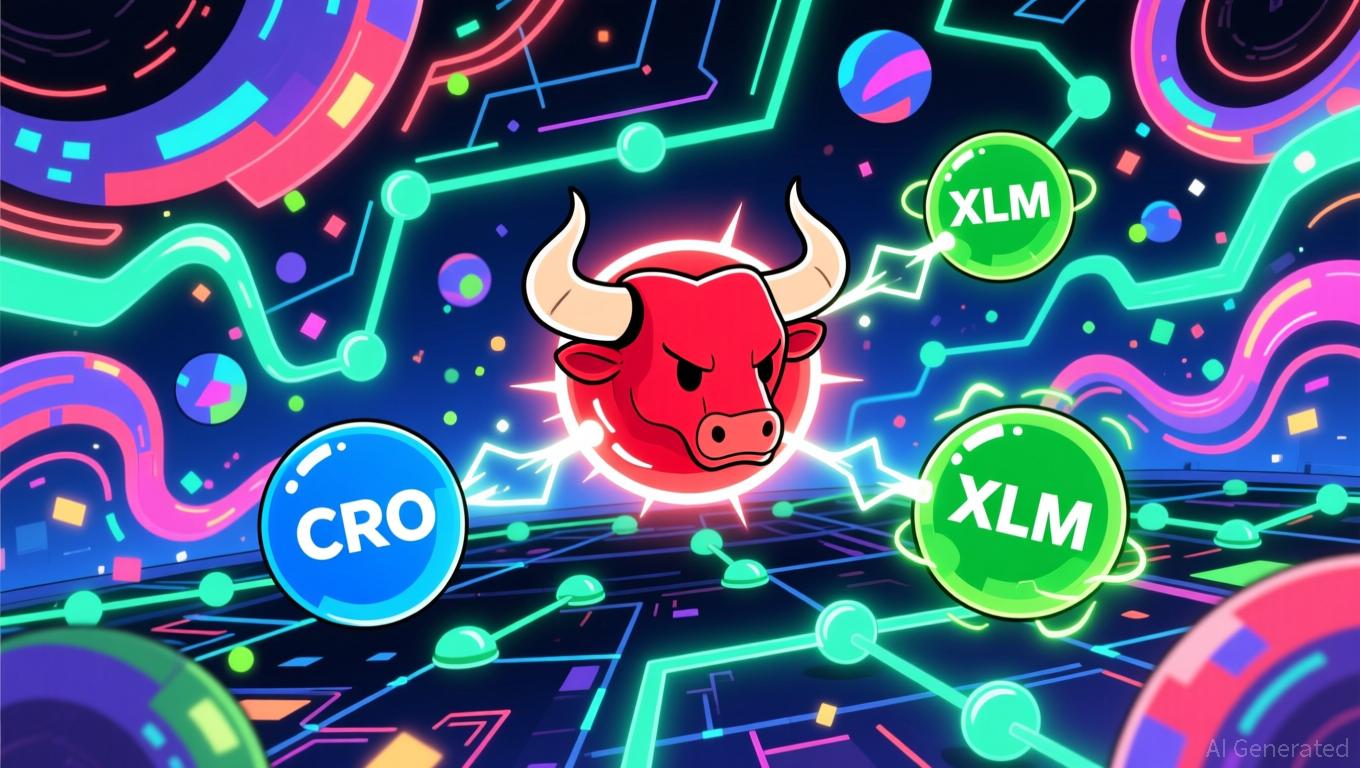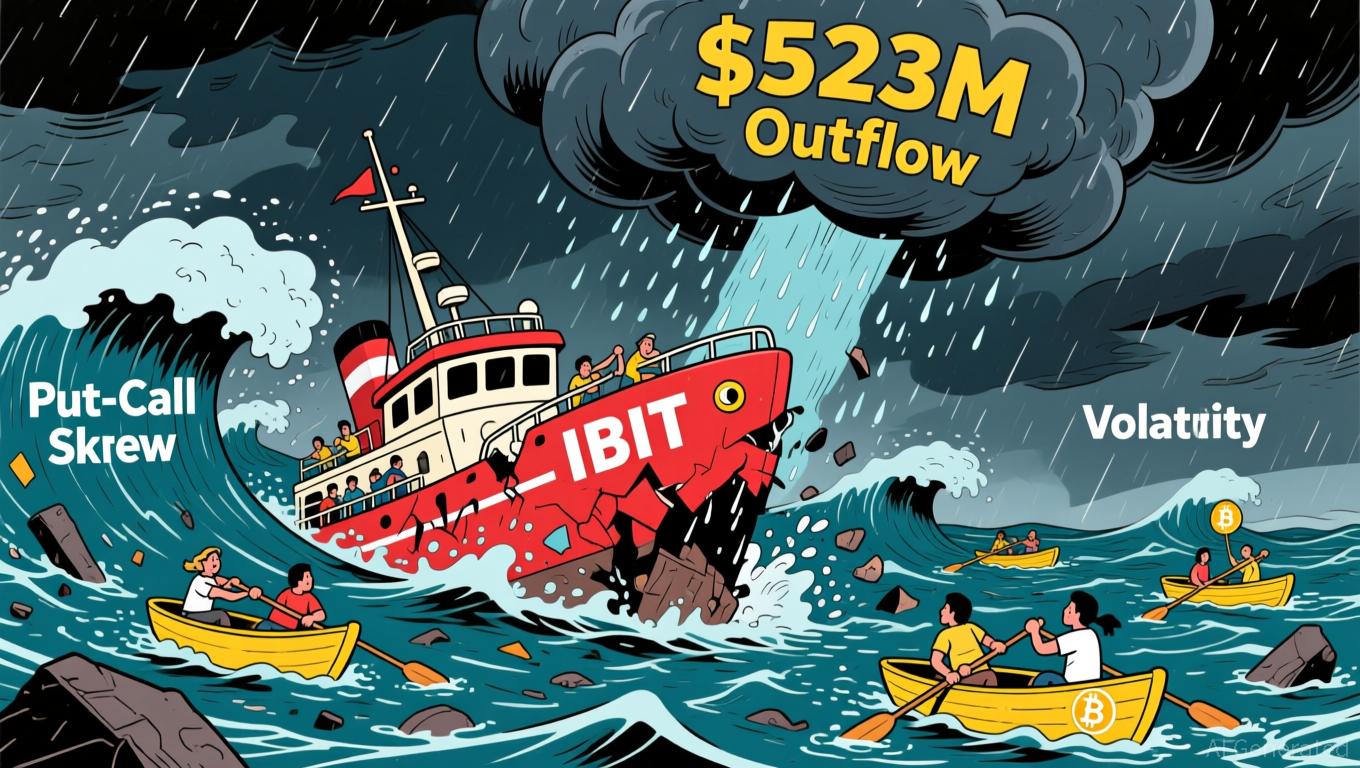The Emergence of Hyperliquid and What It Means for Decentralized Trading
- Hyperliquid redefines decentralized trading via HyperEVM blockchain and HyperBFT consensus, challenging speed-decentralization trade-offs. - HIP-3 growth mode slashes taker fees by 90%, driving $10B+ daily volumes and niche asset liquidity diversification. - $4.9M bad debt incident highlights high-leverage risks, prompting 30-day fee locks and stricter market parameters. - Competitors like Aster temporarily outpace Hyperliquid's volume, but its structural innovation positions it as a long-term DeFi leade
Structural Shifts in On-Chain Liquidity Provision
Hyperliquid’s liquidity model is fundamentally different from Automated Market
Importantly, Hyperliquid’s dual-blockchain structure and HyperBFT consensus resolve the persistent challenge of balancing speed and decentralization in blockchain systems. By delivering finality in under a second while maintaining a diverse validator set, Hyperliquid ensures its order book remains both scalable and secure—something that rivals like
User Acquisition and Tokenomics: A New Paradigm
Hyperliquid’s achievements are not just the result of technical advancements but also stem from its user-focused tokenomics. The platform allocates 70% of its token supply back to users, aligning the interests of the protocol with its community
Nevertheless, this swift expansion has brought its own set of issues. In November 2025, Hyperliquid suffered a $4.9 million loss due to a market manipulation incident involving the POPCAT token, marking the third such occurrence that year
Competitive Dynamics and Future Implications
Although Hyperliquid has established a distinct position in decentralized trading, it faces strong competition from platforms like SunPerp and Aster, which use integrated resources and cost efficiencies to improve user experience
For those investing in this space, the message is clear: the next phase of decentralized trading will be shaped by platforms that successfully blend speed, decentralization, and user rewards. Hyperliquid’s HIP-3 growth strategy and HyperBFT consensus offer a model for achieving this equilibrium, but also highlight the necessity of prioritizing scalability and security alongside user growth. As the sector evolves toward comprehensive ecosystem development and sustainable token models, Hyperliquid’s adaptability will be crucial to its future prospects.
Conclusion
Hyperliquid’s emergence illustrates the major changes taking place in on-chain liquidity and user engagement in 2025. By reinventing decentralized trading through low-cost incentives, advanced consensus technology, and community-driven tokenomics, Hyperliquid has become a key force in DeFi’s ongoing transformation. However, the platform’s challenges—especially in managing risks tied to high leverage—emphasize the ongoing need for innovation and caution. For investors, Hyperliquid’s journey offers both promising opportunities and important lessons in a market where technological flexibility and user confidence are essential.
Disclaimer: The content of this article solely reflects the author's opinion and does not represent the platform in any capacity. This article is not intended to serve as a reference for making investment decisions.
You may also like
Stellar News Today: Established Market Prefers Altcoins with Practical Use Cases Rather Than Pure Speculation
- MoonBull (MOONBULL) raised $600,000 in funding, highlighting growing institutional interest in utility-driven altcoins with DeFi infrastructure and staking rewards. - Crypto.com's CRO token maintains stability through expanded merchant partnerships and AI-driven tools, positioning it as a "safe haven" amid market volatility. - Stellar's XLM sees renewed adoption via cross-border payment partnerships, with 20% higher transaction volumes reflecting demand for low-cost solutions in emerging markets. - Marke

Hong Kong Steps Up Global Stablecoin Oversight, Focuses on Competition with Tokyo
- Hong Kong regulators impose strict rules on stablecoin issuers, requiring fiat-collateralized tokens and a 25M HKD capital requirement. - Aligning with global trends, the rules aim to curb risks from algorithmic stablecoins but raise concerns about Hong Kong's competitiveness against rivals like Japan. - Japan's pro-crypto policies and incentives attract firms, while global players like Deutsche Börse integrate fiat-backed stablecoins into financial systems. - Hong Kong's framework mandates reserves and

Bitcoin News Update: Japan's Bond Turmoil Triggers Worldwide Crypto Sell-Off Amid Yen Carry Trade Reversal
- Japan's $135.4B stimulus package triggered a 3.41% surge in 30-year bond yields, destabilizing the $20T yen carry trade and sparking global crypto/stock selloffs. - Rising yields threaten Japan's 230% GDP debt load with higher servicing costs, creating a "debt death spiral" risk as BOJ hesitates to tighten policy. - Forced deleveraging by financial institutions intensified Bitcoin's 26% drop, with Ethereum/XRP/Solana also falling 3-5.6% amid margin calls and capital repatriation. - Upcoming 40-year bond

Bitcoin News Today: Bitcoin ETFs See $523M Outflow as Investors Weigh Fear Against Long-Term Strategies
- BlackRock's IBIT ETF recorded a $1.26B net outflow in Nov 2025, its largest redemption since 2024 launch. - Bitcoin price fell 16% to $52, triggering $2.59B outflows across 11 spot ETFs as bearish options demand surged. - Put-call skew hit 3.1% (7-month high), reflecting heightened pessimism and capitulation pressures in Bitcoin's price action. - Gold ETFs gained $289M as investors sought safe havens, contrasting with $1B inflows to tech/healthcare sector funds. - Year-to-date Bitcoin ETF inflows ($27.4B
